The Italian Larder
Search by alphabet:
A B C D E F G H I J K L M N O P R S T U V W Y Z
- PANCETTA
- PARSLEY
- PASTA
- PEA / MANGETOUT / SNOW PEA
- PEPPER / SWEET PEPPER / BELL PEPPER
- PINE NUT
- PORK
- POTATO
- POTATO STARCH
- PRAWN / SHRIMP / CRAYFISH / MANTIS PRAWN
- PROSCIUTO / HAM / CURED HAM
Paganello– See Fish: Goby
Pagello – See Fish: Sea bream
Pagello bastardo – See Fish: Sea Bream, axillary
Pagello fragolino– See Fish: Pandora
Pagello mormora – See Fish: Sea bream, striped
Pagro– See Fish: Porgy, red
Palamita – See Fish: Tuna
Palombo– See Fish: Shark
Pan di ramerino – See Bread
Pancetta
Substitutions: streaky bacon / American bacon
Pancetta is cured pork belly characterised by alternating layers of pork fat and meat. It is same cut as streaky bacon, also known as American bacon, but it is cured differently. It can be brined or dry-salted and sometimes smoked.
Buy: Pancetta is available with or without the rind, natural, aged, or smoked. The most common is the flat pancetta (pancetta tesa).
Types:
Flat pancetta (Pancetta tesa) is flat like American streaky bacon. It is cured for between three weeks to two months. In Alto-Adige, Friuli, and Valle d’Aosta it is sometimes smoked (pancetta affumicata). Prized varieties include the rectangular pancetta di Calabria PDO, sometimes coated in powdered chilli, and pancetta tesa lucana from Basilicata.
Rolled pancetta (Pancetta arrotolata) is rolled and made from the leaner parts of the pork belly. It is flavoured with pepper and cloves. Prized types include pancetta piacentina from Emilia and Lombardia and pancetta arrotolata dei Monti Nebrodi from Sicilia.
Lean pancetta (Pancetta linea / Rigatino) is a lean pancetta from Toscana.
Store: Pancetta can be kept in the refrigerator in an unopened package for two weeks or in an opened but sealed package for one week. It can also be frozen for up to a month.
Prepare: If the pancetta has a rind, you may want to cut this off. Otherwise, no special preparation is necessary aside from slicing or chopping it according to the recipe.
Eat: Pancetta tesa is used in soffritto or battuto (a mixture of chopped pancetta, onion, carrot, and celery which is used as the base of many dishes), pasta sauces (carbonara), kebabs (spiedini). It is also pounded or chopped with garlic and herbs and pan-fried to form a base for some dishes or to flavour soups or stews. Pancetta arrotolata is used in stuffings or served uncooked with other cured meats. There is also pancetta coppata where the pancetta is wrapped around the pig’s cervical muscle and flavoured with spices.
Pandora – See Fish: Pandora
Pane – See Bread
Pane Nero – See Bread
Pansotti – See Pasta: Fresh Pasta
Papalina– See Fish: Sprat
Pappardelle – See Pasta: Fresh Pasta
Parmesan Cheese (Parmigiano Reggiano) – See Cheese
Parmigiano Reggiano – See Cheese
Parsley (Prezzemolo) (Petroselinum crispium / Petroselinum hortense / Petroselinum sativum)
Regional names: apio, petroselino, petrosello
Parsley is a green leafy herb with three leaves at the top of a stem that originates from the Mediterranean. It is sold all year-round. In Italian, someone who never misses a party or event is called “come il prezzemolo” which translates as “like parsley”, since this herb is ubiquitous. Do not confuse parsley with coriander / cilantro which is sometimes called Chinese parsley (prezzemolo cinese / coriandolo) which has a completely different and more pronounced flavour.
Buy: Italians only use flat-leaf parsley, not the curly leaf variety, as it has a superior flavour. Choose parsley which has dry, crisp, bright green leaves and is free from any signs of rotting, dampness, yellowing, or wilted leaves. Dried parsley is also sold but it has a grass-like flavour so is not worth buying.
Types:
Curly parsley (Prezzemolo riccio) (Petroselinum crispium / Petroselinum sativum) is used for decorative purposes as it is inferior to flat-leaf parsley in terms of flavour and aroma.
Flat leaf parsley / Continental parsley (Prezzemolo comune) (Petroselinum crispium, var. Neapolitanum / Petroselinum hortense) is the most frequently used parsley in Italy with a fine flavour.
Broad-leaf parsley (Prezzemolo Gigante d’Italia) (Petroselinum crispium, var. Neapolitanum / Petroselinum hortense) has very large leaves and is used in battuta (see below).
Store: Store parsley unwashed in a plastic bag in the drawer of the refrigerator for up to five days. Chopped parsley can be held overnight under a damp towel in the refrigerator, although it is preferable to use it the same day it is chopped.
Prepare: Soak the parsley in a bowl of cold water, swishing the water around. Rinse under cold water and dry well. Remove and discard any yellow leaves. Pluck the leaves from the stems (which can be reserved for making stock) and chop the leaves.
Eat: Parsley is used daily as a flavouring in sauces (salsa verde, bagnet piemontese, gremolata), stocks (mazzetto aromatico), stuffings, pastas (spaghetti alle vongole, spaghetti aglio olio), in court-bouillion for cooking fish, meat, soups and stews. It is chopped together with pancetta, onion, carrot, and celery to make a base (battuto) for many dishes. Parsley is often combined with olive oil and garlic to flavour baked fish, pan-fried meat, mushrooms, seafood sauces for pasta, seafood salads (insalata di mare), or breadcrumbs.
Passera – See Fish: Flounder, European
Passera pianuzza – See Fish: Flounder, European
Pasta d’acciuga – See Anchovy paste
Pasta (Pasta alimentare)
Pasta was legendarily introduced from China to Italy by Marco Polo. This story is generally considered a myth as pasta already existed in Sicily prior to Marco Polo’s famous trip to the East. Pasta was quite likely introduced by the Arabs from the Middle East. Historically pasta was eaten daily only in southern Italy while in northern Italy risotto was eaten daily; this has changed.
The word “pasta” in Italian simply means dough and could refer to bread dough, pastry, or pasta (pasta alimentare). The word “pasta” used on its own will typically refer to dried pasta. Pasta is typically divided into two categories: fresh pasta (pasta fresca) and dried pasta (pasta secca / pastasciutta). Fresh pasta is not necessarily better than dried pasta (a common misperception) as this will depend on how it was made. Pasta in Italy is never served as a side dish to other dishes (although it can be added to broth, stews, soups, or beans) as it is in other countries. It is served as a first course (primo) following the starter (antipasto) and before the main course (secondo).
Prepare: Boil in a large pot or pasta pentola. Once the water begins to boil, add salt. After a couple of minutes, when the water returns to a boil, add the pasta, stirring with a large fork, pasta fork, or pasta tongs and ensuring it is completely immersed in the water. Keep stirring from time to time to ensure the pasta does not stick. Pasta cooking times vary according to shape, thickness, and if it is fresh or dried.
The 10 Commandments of Pasta:
I. Thou shalt select the appropriate shape of pasta for the sauce
II. Thou shalt use 1 litre of water and 10 grams of salt per 100 grams of pasta
III. Thou shalt not add oil to the cooking water
IV. Thou shalt cook pasta until “al dente” for dried pasta or “a punto” for fresh pasta so that it is firm and elastic and is not soft, waterlogged, or falling apart.
V. Thou shalt drain the pasta as soon as it is cooked to the desired texture and dress it immediately
VI. Thou shalt not rinse cooked pasta in cold water (pasta salad is a possible exception but there is a special technique)
VII. Thou shalt not add oil to the cooked pasta unless it is part of the sauce
VIII. Thou shalt not precook or reheat pasta
IX. Thou shalt not dress pasta with too much sauce or watered down sauce
X. Thou shalt eat pasta as soon as it is cooked (do not let it sit in the colander, heated tray, or bowls). “You wait for pasta. Pasta does not wait for you.”
Eat: Pasta is most typically boiled and dressed. It can also be dressed and baked (lasagne al forno, cannelloni, timballi, pasta infornata, pasticcio di cappelletti). It can be stuffed, boiled or baked, and dressed or served in broth (tortellini in brodo, ravioli, pansoti, capelletti, agnolini, tortelloni). Pasta can be added to broths, soups (minestrone), stews (maltagliati), and beans (pasta e fagioli).
Types:
Fresh pasta (Pasta fresca / Pasta casalinga)
Equivalents: Emilian fresh pasta= 100 grams flour + 1 egg = 2 servings
Fresh pasta is normally handmade from soft wheat flour (0 or 00 flour) and/or semolina with eggs or water at home, in restaurants, or by speciality shops. Additional flavourings or fats can be added and other flours such as buckwheat flour substituted. Fresh pasta will vary by region for example in Emilia fresh pasta is made with 00 flour and eggs while in southern Italy it is made with semolina, flour, and water.
Buy/Make: If not made at home, fresh pasta is sold refrigerated as it is highly perishable. Typically it is sold at pastafresca shops (shops that specialise in fresh pasta and pasta sauces) or in gourmet shops. Industrially produced fresh egg pasta is often inferior to industrially produced dried egg pasta. Most stuffed pastas (pasta ripiena) are made with fresh pasta. In northern Italy, types 00 and 0 flours are typically used to make fresh pasta while in southern Italy, hard durum wheat is typically used. Other types of flour used include kamut (grano kamut– a favourite of mine), buckwheat (grano saraceno), chestnut (castagne), barley (castagne essicate), and emmer wheat (farro). Pasta can also be coloured. Traditional colours are green (spinach or borage), yellow (saffron) and black (cuttlefish ink). Modern colours include red (tomato or pepper), orange (carrot or pumpkin), purple (beet), and brown (cocoa) but I don’t recommend these.
Shapes:
Cappelletti are 2-4 cm wide stuffed pastas (pasta ripiena) made with fresh pasta that is made with type 0 flour and eggs. The name means “little hat” as the shape resembles a hat worn in medieval times. They can be filled with meat, cheese, vegetables, lemon zest, herbs, candied citron, and/or nutmeg. They are normally served in a meat broth and are found in Emilia-Romagna, Lazio, Marche, and Umbria. The two main types are cappelletti reggiani which are filled with meat, prosciutto, breadcrumbs, and Parmigiano-Reggiano cheese and cappelletti romagnoli which are filled with Parmigiano-Reggiano cheese, ricotta or Raviggiolo cheese, and spinach or chard. When served dry, they are dressed with butter and Parmigiano-Reggiano cheese or garlic, olive oil, and truffles. They are traditionally served at Christmas.
Regional name: caplet, capelli del prete
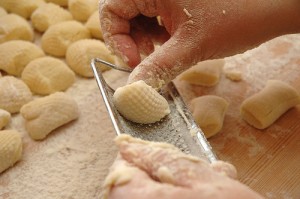
Potato gnocchi by Paolo Valdemarin
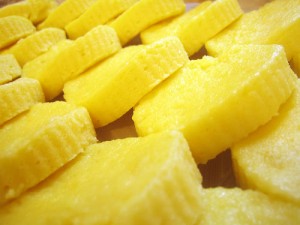
Semolina gnocchi by Thomas
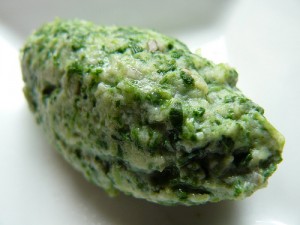
Spinach and ricotta gnocchi by Bloggyboulga
Gnocco / Gnocchi / Gnocchetti are pieces of pasta or dumplings which can be made with wheat flour (gnocchi alla lariana), chestnut flour (gnocchi ossolani), semolina (gnocchi alla romana, gnoches de gries), cornflour (gnocchi del prete), polenta (gnocchi di polenta, matuffi), ricotta cheese (gnocchi di ricotta), buckwheat (gnocchi di grano saraceno), breadcrumbs (gnocchi di pane), potatoes (gnocchi di patate, gnocchi di latte), pumpkin (gnocchi di zucca, gnocchi ossolani), plums (gnocchi di susine), greens (gnocchi verdi, gnocchi di spinaci), water, or eggs. There are dry gnocchi which are made with just flour and water and potato gnocchi sold in cryovac packaging. Sizes vary but they are generally are about 1 cm wide by 2 cm long. Gnocchi may have a smooth, ridged, or bumpy texture. They are normally made fresh and boiled or baked. Gnocchi can be dressed with cheese (gnocchi alla bava), tomato sauce (gnocchi alla sorrentina, gnocchi della vigilia) or butter and cheese (gnocchi di patate alla veronese, gnocchi di pane, gnocchi di grano saraceno, gnocchi del prete, gnocchi di polenta, gnocchi di ricotta) as well as sweet gnocchi (gnocchi con il cacao, gnocchi di susine, gnocchi dolci di Natale).
Regional names: torsellini, gnocchetti di gris, sbirici, zlicnjaki, pestarici, Emilia-Romagna: gnuchét
Lasagne See Dried pasta: Lasagne
Orecchiette See Dried pasta: Orecchiette
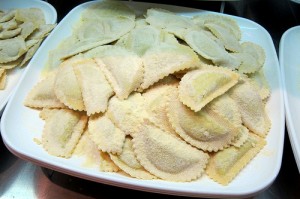
Pansotti by Wally Gobetz
Pansotti are a stuffed pasta in the shape of a triangle from Liguria. The pasta is made of wheat flour, water, and white wine and is cut into 8 cm squares which are folded over. They are traditionally stuffed with preboggion (mixed wild herbs and greens), ricotta or prescinseua (curd cheese), Parmigiano-Reggiano cheese, egg, and garlic and dressed with salsa di noci (walnut sauce).
Regional names: pansoti, pansooti
Pappardelle are large, flat, long ribbon pasta from Toscana, which are about 3 cm in width. The name comes from a word in Tuscan dialect, “pappare” which means “to eat”. When homemade, they are made with wheat flour and water or eggs but the ratio of flour is slightly higher than usual (3 eggs per 350 grams of flour with a bit of water added to compensate). When produced industrially, they are made with durum-wheat flour and water and tend to be longer. They are traditionally dressed with meat sauces such as hare stew (pappardelle con la lepre).
Regional names: paparele, paspadelle
Tajarin is a long thin pasta made of wheat flour, egg yolks, and salt, sometimes with oil, butter, or white wine. There is a variation made with corn flour (tajarin di meliga). Tajarin are 3 to 4 mm in width. It is from Piedmont and is served with white truffle (tajarin al tartufo), roasted meat gravy (tajarin al brucio), or a meat sauce made from organ meats (comodino) or chicken livers (sugo di fegatini). It can also be served with tomato and basil or butter and sage.
Regional names: tajarin d’la nona, ceresolini
Trofie – See Dried pasta: Trofie
Store: Fresh pasta can be stored, sealed in the refrigerator for up to 2 days. For longer conservation, it needs to be completely dried or frozen.
Prepare: Fresh pasta is traditionally made on a wooden board using a wooden rolling pin but today most homemade pasta is made using a pasta rolling machine. Making fresh pasta at home is an acquired skill. Fresh pasta is made with flour and eggs or water, sometimes with the addition of flavourings such as white wine, saffron, squid ink, spinach, etc. Fresh egg pasta (pasta all’uovo) is typically made with 100 grams of flour per egg but this depends on the size of the eggs and the how much liquid the flour can absorb.
Fresh pasta can be cut and shaped in a variety of ways: by being cut with a knife (maltagliati, sagne, fazzoletti), by using a pasta wheel (sfrisolate), by tearing (pasta strappata), rolling it around a needle (maccheroni bobbiesi, maccheroni al ferretto, fusilli, fileja), rolling it across a chitarra (a special tool with wires drawn across a frame) (macchernoi alla chitarra), rolling it with a textured tool such as a sieve or grooved rolling pin or board (malloreddus), stamping it (corzetti), grating it (pasta trita) and using the fingers to make special shapes (trofie, orecchiette, cavatelli, pici, lorighittas, strascinati) or a combination of the above (garganelli, farfalle).
See the “Prepare” section above. Cooking times vary for fresh pasta depending on how fresh they are, how thick they have been rolled, the shape, and if vegetables were used (accelerates the cooking). The cooking time is usually brief in comparison to dried pasta. The desired texture, typically referred to as “a punto” or “al dente”, is different to that of dried pasta as it is softer, silkier, and less elastic than dried pasta. Use warmed bowls for serving pasta.
Dried pasta (Pasta secca / Pastasciutta / Pasta asciutta)
Equivalents: 70-80 grams = 1 serving
- BUCATINI
- LASAGNE
- MACCHERONI
- MALLOREDDUS
- ORECCHIETTE
- PASTINA
- PENNE
- RIGATONI
- SPAGHETTI
- TRENETTE
- TROFIE
Dried pasta is normally industrially produced from hard durum wheat flour or kamut flour and water. It was invented in the 20th century in Naples and has since become an Italian staple. Two of the most popular brands are DeCecco and Barilla.
Buy: Dried pasta is packaged and sold dry with a long shelf life. The pasta should be uniform in colour and free from any greyish tinge. Thin pastas should be translucent when held up to the light. Egg pastas should be a bright yellow colour. They are typically sold in packages of 500 grams but can also be sold in 100 gm, 250 gm, and 1 kilo packets. There are also dried pastas which are made with eggs, spinach, tomatoes, buckwheat, kamut, or whole wheat. If there is a window in the packaging, check to ensure that the pasta is not broken or crumbling and that it is pest free. More artisanally produced dried pastas will have extended drying times (40 to 80 hours versus 32 hours for industrially produced pasta) and use bronze plates for shaping or cutting the pasta to give it more texture that helps the pasta retain the sauce.
Dried pasta can be long or short, solid or hollow, ridged or smooth, and rounded or flat, each shape suitable to a certain type of dressing. Generally speaking, long pasta (pasta lunga), such as spaghetti, are more suitable to olive oil based sauces which keep the strands separate. Butter, cream, and cheese sauces are best paired with thick long pasta or short tubular pasta (pasta corta). Large tubular pasta such as rigatoni, cannelloni, and penne are better for baked dishes. There are also coloured pastas (pasta colorata / pasta aromatizzata) flavoured with squid ink (black), saffron (yellow), green (spinach), red (tomato), and brown (mushroom). Aside from the black, green, and yellow pastas, I find the rest gimmicky, particularly any pasta with multiple colours.
Store: Dried pasta should be kept in a sealed container in a dry place. It can be kept for years at room temperature but always follow the expiration date on the packaging.
Prepare: See the “Prepare” section above. Pasta cooking times vary from 2 to 30 minutes depending on their thickness and shape so follow the suggested cooking times on the packaging and taste often to achieve the desired texture. The consistency of the pasta is extremely important to Italians. The desired texture is rather subjective with a strong preference for less cooked pasta, or “verde”, the further south one travels in Italy. Overall there is an agreement that pasta cooked “al dente” (meaning to the tooth) is acceptable. Pasta cooked “al dente” should not be hard or soft but should still be firm, offer resistance, and be elastic. It can be drained in a colander or lifted from the water using a fork or tongs. Use warmed bowls for serving pasta. Leftover pasta can be used to make an omelette (pasta frittata).
Shapes:
Bavettine – See Linguine
Bucatini are made with durum wheat and water and are up to 10 cm long, thick and tubular. They are about 2.5 to 3 mm in width with the hole about 1 mm wide. The name means “pierced”, as they are long factory made pasta strings with a hole in the centre that ranges in size. Although bucatini originate from Napoli, they are typically eaten in central and southern Italy, particularly Lazio. They are also found in Liguria. It is traditionally dressed with richly flavoured sauces made from butter, eggs (carbonara), pancetta (alla amatriciana, alla gricia), vegetables, and cheese which are made liquid enough so that the sauce also fills the hole. A thinner version of bucatini are perciatelli whereas thicker varieties are ziti lunghi and candele.
Regional names: boccolotti, candelle, mezzani, scaloppi, regine; Liguria: fidelini bucati; Campania: perciatelli, perciatellini, and perciatelloni; Sicilia: ziti, zite, filatu cu lu pirtusu, maccarruncinu, agnoi bucai, and spilloni bucati
Gnocco / Gnocchi / Gnocchetti – See Fresh pasta
Lasagne these are sheets of pasta made with 0 or 00 flour, eggs, and with or without spinach (lasagne verdi) and with or without egg. They can also be bought or made fresh. Lasagne is made of varying dimensions but the classic size is 5 x 12.5 cm. Lasagne which are narrower (2-3 cm) and longer (12-15 cm) are labelled “mezze lasagne” and tend to be cooked and served like other long pasta. Lasagne with a ruffled edge are labelled “lasagne riccia / doppio festone”. Some lasagne are able to be dressed while dry and baked and others need to boiled beforehand. The name comes from a Latin word, “lasanum” which means “kitchen pot” referring to what was being cooked in the pot. Lasagne are layered with a variety of dressings including pesto (lasagne al pesto); meat sauce and béchamel (lasagne alla bolognese); vin santo, béchamel sauce, meat sauce, mushrooms, cheese, and butter (vincisgrassi from the Marche); seafood (lasagne ai frutti di mare); tomato sauce and ricotta salata cheese (lasagne alla calabrese) and sausage, meatballs, cheese, eggs, and meat sauce (lasagne napoletana / lasagne di Carnevale from Napoli in Campania). Lasagne made with fresh pasta will cook in a few minutes whereas dried pasta will require much longer in the oven.
Regional names: bardele, lasagnoni, cappellasci, sagne, lagana, sciabò, sciablò
Maccheroni to northern and central Italians means any industrially produced tubular or twisted pasta including penne, ziti, etc. Southern Italians, particularly from Napoli, call any durum wheat semolina pasta long or short, hollow or solid, “maccheroni”. In some regions, maccheroni refers to homemade fresh pasta. Abroad, the word “macaroni” means a shell shaped pasta.
Maccheroni alla chitarra is a square-edged pasta, typically 30 cm in length, made from durum wheat flour and eggs or water. The dough is rolled and then cut on a chitarra (a special stringed tool called a guitar). Although it originates from Abruzzo, it is also found in Lazio, the Marche, and Puglia. It is traditionally served with tomato sauce and small meatballs.
Regional names: caratelle, tonnarelli, crioli, stringhetti
Malloreddus / Malloreddos are small gnocchi from Sardegna. They are made with durum wheat flour, saffron, water, and salt, sometimes with barley (maccarronis de orgiu). They are shaped by flattening small pieces of dough with the thumb and rolling it agross a ciurili (wicker basket) to give it texture. Malloreddus means “calves”. The industrially produced malloreddus are called gnocchetti sardi. They are served with meat or sausage sauces (malloredos cun ghisadu) and pecorino cheese or tomato and basil (al pomodoro e basilico).
Regional names: macarones, caidos, macarones cravos ciciones, aidos, cravaos
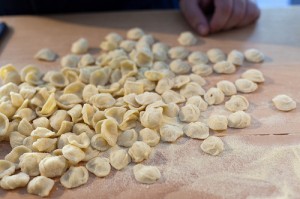
Orecchiette by Renée S. Suen
Orecchiette are cup-shaped pasta of various sizes made of durum wheat flour, type 0 wheat flour, and water, sometimes with some whole-wheat flour. The name means “little ears” referring to the shape created by pressing down with the thumb to create a cup. Orecchiette are a traditional pasta from Puglia and Basilicata where they are still made at home. Typically orecchiette are commercially produced. Traditional dressings include tomato sauce and cheese (con salsa di pomodoro e ricotta schianata, con cacioricotta, alla ricotta forte), lamb ragù (alla maternal), turnip tops with anchovies, garlic, chilli, and olive oil (orecchiette con le cime di rapa) and tomatoes and rocket (alla rucola).
Regional names: orecchini, recchietelle, orecchie di prete, stacchiodde, strascenate, chiancarelle, stagghiodde, recchietedde, recchie de prevete, fenescecchie, pociacche, cictelli, chiangarelle, orecchie di ebreo, pestazzuole and tapparelle
Pastina This is a general name for tiny pasta of various shapes served in broth. They are made of durum-wheat flour and eggs or water. They are a favourite for feeding babies and young children since they need not be chewed. Shapes include star (stelline, stelle), rice-shaped (risi), alphabet letter shaped (alfabeto), barley shaped (d’orzo), bows (fiocchietti) and ring-shaped (anellini, occhialini, pepe bucato, routine, tubetto minuto).
Penne are a short tubular pasta which can have either a smooth (lisce) or ridged (rigate) surface. It is made from durum-wheat flour and water and originates from Campania. Penne are about 1 cm wide and 5-6 cm long. Mezze penne are half the length but the same width while pennette are 4 cm long and 4.5 mm wide. The name means “quills” referring to the shape of antique pens. Penne is dressed with meat sauces, tomato sauces (all’arrabbiata), artichokes (con i carciofi) and is used in baked dishes (timballo).
Regional names: vary according to the length and size but include: mostaccioli, penne a candela, penne di Natale (long), natalini (long), penne di ziti, penne di zitoni, pennoni ziti tagliati, pennuzze, zitoni tagliati, maltagliati; smaller penne: penne di mezzane, pennette, pennette di mezzne rigate, pennette rigate, pennettine, pennine; for the large penne: pennoni, zitoni, attupateddi, penne di ziti rigate, ziti tagliati, mostaccioli
Rigatoni is a medium-sized tubular pasta with ridges made from durum wheat flour and water. It ranges from 4-8 cm in length and 1-1.5 cm in width with a hole ranging from 1 cm wide or larger. The name comes from the word “rigato” meaning “ridged”. It is a favourite pasta shape in southern Italy. It is dressed with meat sauces (con la pajata, ragù napoletana, garofaolato), tomato sauce (col pomodoro), sausage (alla norcina, con ricotta e sugo di salsiccia) or is optimal in baked dishes (imbottiti).
Regional names: bombardoni, cannaroni, cannerozzi rigati, maniche, rigatoni romani, rigatoncini, trivelli, tufoloni rigati, scaffittuni
Spaghetti / Vermicelli is the most renowned of the pasta shapes and its name means “little strings” referring to its shape. It is made from durum-wheat flour and water. Spaghetti ranges in width from 1.2 to 2.05 mm and in length from 26 to 29 cm. Thinner varieties are capellini, capelli d’angelo, spaghettini, and vermicellini whereas thicker varieties are spaghettoni and vermicelloni. Spaghetti should be drained so that it still has some of the cooking water attached to it. It is most suited to oil based sauces (alla Boscaiola, alla Carrettiera, alla Sirucsana, aglio e olio, alla norcina, coi carciofi, con la cipolla), tomato sauces (alla puttanesca, alla Norma, alla puttanesca) seafood sauces (con le alici, ai ricci di mare, con il tonno, con le telline, alla taranta all anguilla e frutta di mare) or cheese sauces (cacio e pepe).
Regional names: fide, fidillini, maccheroni
Trenette are a flat, long pasta ribbons from Liguria made from durum wheat flour and water. When whole wheat flour is added, they are then called “trenette avvantaggiate”. They are similar to linguine and bavette but are wider. Even wider are tagliatelle and the widest are fettucine, lasagnette and pappardelle.
Regional names: trinette
Trofie is a short pasta which is spindle shaped, tapering at the ends, from Liguria. It is made from durum wheat flour. Homemade trofie will use wheat flour enriched with bran instead of durum wheat flour and may also include bran, potatoes, bread, or chestnut flour. The name derives from a Greek word meaning “nourishment”. They are traditionally served with pesto, potatoes, and green beans (al pesto avvantaggiato), or pesto with fava beans. They are also dressed with mushrooms, meat sauce, or fish.
Regional names: rechelline, trofiette, troffie, troffiette
Vermicelli – See Spaghetti
Pasta alimentare – See Pasta
Pasta asciutta– See Pasta: Dried Pasta
Pasta casalinga – See Pasta: Fresh Pasta
Pasta fresca – See Pasta: Fresh Pasta
Pasta secca– See Pasta: Dried Pasta
Pastasciutta– See Pasta: Dried Pasta
Pastina – See Pasta: Dried Pasta
Patata – See Potato
Pea / Mangetout / Snow pea (Pisello / Taccola / Pisello mangiatutto) (Pisum sativum)
Equivalent: 450 grams peas in the pod = 225 grams shelled = 1 cup= 2-3 servings;
for young peas: 450 grams peas in the pod = 110 grams shelled;
450 grams mangetout= 4 servings
Peas are a quintessential spring vegetable and are harvested throughout the spring and summer. Varieties of peas which are particularly sweet include: Cristoforo Colombo, Progress n.9, and Meraviglia d’Italia (the best flavoured). The best variety of mangetout is the “Caruby”. Peas are a good source of vitamins A and C, thiamine, protein, and phosphorus.
Buy: Peas which are underdeveloped are called mangetout and are eaten whole with the pod. As the peas mature, the pod is removed and the peas inside are eaten.
Types:
Peas (Pisello): Peas have a cylindrical pod which is straight or curved which contain up to 10 spherical peas. Peas should be purchased refrigerated as their sugar turns to starch within 6 hours at room temperature. Select medium-sized, plump, firm, bright green pea pods where the peas have clearly formed but are not visible through the pod. Smaller peas are sweeter than large peas, which are floury and bitter. They should be crisp and free from any yellow tinges or wilting. Ideally, open the pods and taste the peas before purchasing to taste if they are sweet and tender. Peas which are sold shelled are convenient but at the risk of compromised quality because the sugar in the peas quickly turns to starch after podding. Frozen peas are also very good as they are frozen the day they are picked. “Petit pois” is a very small pea which is very small and sweet. “Piselli novelli” are young tender peas. There are also tinned peas (which are inferior) and dried peas (which are not a suitable substitute for fresh or frozen peas and are not typically used in modern Italian cuisine).
Mangetout / Snow pea (Taccola): Mangetout are larger than peas and flat. Mangetout are eaten in the Marche, Piemonte, and Lombardia.
Store: Fresh peas should be used within a day of purchasing as their sugar turns to starch within 12 hours under refrigeration. They should be stored in a plastic bag in the refrigerator. If you cannot use the peas in time, they can be frozen shelled or in their pod for several months. Mangetout can be stored in the refrigerator for up to 3 days.
Prepare: Frozen peas can be used directly from the freezer without thawing. To prepare fresh peas in the pod, pinch the tip of the pod and pull down along the seam to remove the string. Use your thumbs to pull the pod open along the seam and slide your thumb along the inside of the pod to dislodge the peas. The pods can be used to make broth. If the mangetout has a string, then this should be removed.
Eat: Peas need to be cooked quickly in order to remain sweet and fresh. Peas are used in soups (bazzoffia, menestra de bisi spacai, lepudrida, zuppa di piselli, zavardella, pisellata, risi e bisi), pasta sauces (tagliatelle e bisi), or as a side dish (carciofi coi piselli, piselli al prosciutto, piselli con lo zafferano, vignarola). Mangetout is stewed with tomato and onion or boiled. Peas pair well with bacon, pancetta, prosciutto, speck, butter, parsley, mint, basil, garlic, shallots, onions, spring onion, asparagus, new potatoes, carrots, broad beans, chicken, lamb, duck, scallops, or fish.
Pearl onion – See Onion
Pecora – See Lamb
Pecorino – See Cheese
Pecorino Romano cheese – See Cheese
Pecorino Sardo cheese – See Cheese
Pecorino Siciliano cheese – See Cheese
Pecorino Toscano cheese – See Cheese
Penne – See Pasta: Dried Pasta
Pepe nero – See Black peppercorn
Peperoncino – See Chilli
Peperone – See Pepper
Pepper / Peppercorn – See Black peppercorn
Pepper / Sweet pepper / Bell Pepper (Peperone) (Capsicum annuum)
Peppers are a vegetable which can be white, orange, yellow, red, or green and varies widely in flavour, size, and shape. Peppers tend to be sweet but some of the varieties may produce the odd spicy pepper as well. They are harvested in the summer, particularly in June. Peppers are enjoyed in Basilicata, Calabria, Lombardia, Piemonte, and Umbria. The best varieties are California wonder, Quadrato d’Asti, and Lungo Marconi. The most important pepper is the peperone corno di bue di Carmagnola from Piemonte. The best varieties for preserving in vinegar are the green horn-shaped Sigaretta verde (friarelli) and Lombardo chiarissimo.
Buy: Peppers should be firm, glossy, unblemished, unwrinkled, crisp and juicy with lots of flavour. The stem should be firm and the pepper should feel heavy for its size. Peppers can be four-sided (grossum / grosso / peperoni quadrati), heart-shaped (peperoni a cuore di bue), horn-shaped (longum / lungo / peperoni a corno), and tomato-shaped (peperoni a pomodoro). In many cases, the green and white peppers are just underdeveloped varieties of red or yellow peppers. Green peppers are more acidic and less perfumed while more mature peppers will have a more intense, fruity flavour.
Store: Peppers can be stored in a plastic bag in the refrigerator for up to a week, although should ideally be eaten within 2 days (10 days for green peppers and eaten within 3 days).
Prepare: Rinse the pepper with cold water, cut off the top with the stem and push the stem out with your thumbs and discard. Remove the seeds and the white pith with a small knife as this is where any spice will be concentrated, even in sweet peppers. Do not touch your face before washing your hands. To remove the skin, the pepper can be scorched on a grill or over a fire until the skin blackens or baked at 200°C until the skin separates from the flesh, put it in a closed plastic bag to cool and then remove the skin.
Eat: Peppers are best grilled or scorched. They can be cooked in olive oil (peperone fritto in padella, friggitelli peperoni con la mollica), marinated, or stewed (peperonata, peperone in umido). Peppers can be stuffed (peperoni ripieni, peperoni imbottiti di maccheroni), roasted (peperone arrostito), baked (peperoni al gratin), pickled (peperoni alla vinaccia, paparolesse, pupazzelle ‘a cumposta), dried, used to dress pasta (pasta con i peperoni), or cooked with meat or chicken (pollo in padella). They are also served raw on their own (bagna caôda, pinzimonio) or in salads. Peppers pair well with olive oil, saffron, fennel, basil, marjoram, garlic, balsamic vinegar, olives, capers, mozzarella, fontina, goat cheese, Parmigiano-Reggiano cheese, tomatoes, aubergine, onion, and courgette.
Perca– See Fish: Perch
Perch- See Fish: Perch
Persa – See Marjoram
Persia – See Marjoram
Persica – See Marjoram
Persico sole – See Fish: Pumpkinseed sunfish
Pesce bandiera – See Fish: Scabbardfish, silver
Pesce castagna – See Fish: Pomfret
Pesce cetra – See Fish: John Dory
Pesce gallo – See Fish: John Dory
Pesce gatto – See Fish: Catfish
Pesce lucerna– See Fish: Stargazer, Atlantic
Pesce lupo– See Fish: Hake or Sea bass
Pesce persico – See Fish: Perch
Pesce pettine– See Fish: Wrasse, cleaver
Pesce pilota– See Fish: Pilot fish
Pesce prete– See Fish: Hake or Stargazer, Atlantic
Pesce ragno – See Fish: Weever
Persico reale – See Fish: Perch
Pesce San Pietro – See Fish: John Dory
Pesce sciabola– See Fish: Scabbardfish, silver
Pesce serra – See Fish: Bluefish
Pesce spade – See Fish: Swordfish
Pesce spatola– See Fish: Scabbardfish, silver
Peter’s Fish – See Fish: John Dory
Pezzogna – See Fish: Sea bream
Picarel – See Fish: Picarel
Pignolo – See Pine nut
Pigo – See Fish: Pigo
Pike – See Fish: Pike
Pilchard – See Fish: Sardine
Pilot fish – See Fish: Pilot fish
Pine nut (Pinolo / Pignolo / Pinocco) (Pinus pinea)
Pine nuts are the 2 cm long oblong nuts of pine trees, contained within the pine cone. In Italy, pine nuts come from Mediterranean stone pine trees in central and southern Italy and from umbrella pine trees in Liguria. The pine nuts are harvested in September.
Buy: Buy in small quantities as the resinous oils in the pine nuts spoil quickly. It is best to taste the pine nuts prior to purchasing to ensure their freshness. Avoid pine nuts with a dark patch at the narrow end.
Store: They can be stored sealed in the refrigerator or frozen to keep the oils from turning rancid.
Prepare: Toast the pine nuts in a frying pan or on a sheet pan in the oven until golden to bring out their flavour.
Eat: Pine nuts are used to add flavour and texture to salads, stuffings, sauces like pesto, and in desserts like cookies (pinolata, torcolo) and cakes (pinoccate, torta della nonna).
Pine bolete mushroom– See Mushroom: Porcini
Pinewood king bolete mushroom – See Mushroom: Porcini
Pinocco – See Pine nut
Pinolo – See Pine nut
Piopparello, fungo – See Mushroom: Honey armillary mushroom
Pioppino, fungo – See Mushroom: Honey armillary mushroom
Piovra – See Octopus
Pisello – See Peas
Pisello mangiatutto– See Peas
Plaice– See Fish: Plaice
Platessa – See Fish: Plaice
Pleurotus, fungo – See Mushroom: Oyster
Pollack – See Fish: Pollack
Pollak – See Fish: Pollack
Pollo – See Chicken
Polpessa– See Octopus
Polpetto – See Octopus
Polpo – See Octopus
Polpo di Aldrovandi – See Octopus
Polpo muschiàto – See Octopus
Polpo di sabbia – See Octopus
Pomfret – See Fish: Pomfret
Pomodoro – See Tomato
Pompano – See Fish: Pompano
Pond perch– See Fish: Pumpkinseed sunfish
Ponentine – See Olive
Popone – See Melon
Porcini mushroom – See Mushroom: Porcini
Porcino, fungo– See Mushroom: Porcini
Porcino commune, fungo – See Mushroom: Porcini
Porcino dal gambo rosacea, fungo – See Mushroom: Porcini
Porcino estivo, fungo – See Mushroom: Porcini
Porcino nero, fungo – See Mushroom: Porcini
Porcino reticolato, fungo – See Mushroom: Porcini
Porcino rosso, fungo – See Mushroom: Porcini
Porgy, red – See Fish: Porgy, red
Pork (Maiale / Suino) (Sus domesticus)
In Italy, domesticated pork and wild boar (cinghiale – See Wild Boar) are eaten. It is the most used meat in making salami, sausages, prosciutto and other cured meat products. No part of the pig goes unused. The skin is made into pork rinds (cotenne / cotiche). The blood (sangue) is used in sanguinaccio and migliaccio and can be fried. The head (testa) is made into coppa di testa and the cheek made into guanciale. The belly is made into pancetta. The fat is used as lard (strutto) and lardo, while what is leftover after making the lard is made into pork scratchings (ciccioli) – see Pork Scratchings below.
Native breeds of pig in Italy include cinta senese (Toscana), suino di razza mora romagnola (Emilia-Romagna), suino pesante (Emilia-Romagna), razza casertana (Campania), and maiale nero (Calabria).
Buy: Pigs raised for their meat are normally more than 8 weeks old and can weigh up to 150 kilos. There is also suckling pig (maialino), which is four to eight weeks old. Look for meat which has a good proportion of lean meat to fat. The meat should be pale in colour (not deep rose coloured) and have pliable bones with a soft skin. Brittle bones and rough skin are a sign that the pig was too old. The meat should be free of brown or yellow stains on the skin. It should be damp but not wet or slippery. If there is any smell to the pork, it is past its prime. Free-range pork has a better texture and flavour. When selecting a suckling pig, choose one which is 5 to 6 kilos in weight as it will have developed some flesh but will still be tender.
1. Upper loin fillet (filetto / lonza / lombo)- good for roasting
2. Chump and leg (cosciotto)- good for making ham and prosciutto, needs to be slow cooked to remain juicy
3. Hock or foot (piedini / zampetto)- good for boiling or frying
4. Lower loin (puntine costine)- good for roasting, stewing or braising
5. Belly or flank (pancetta / pancia)- good for forcemeats or larding, can be roasted, grilled, fried, or braised
6. Lower blade- middle forerib / pork rib (filetto, puntine di petto, costine di petto, lombo)- good for roasting or grilling
7. Upper spare rib and blade (carre, costoletta, or costina braciola puntine)- good for roasting, grilling, frying, minced for meatballs, made into chops or cutlets
8. Upper hand / Lower blade / shoulder (spalla)- good for roasting, simmering, and stewing, needs to be slow cooked to remain juicy
9. Head and chine / neck (testa e capicollo / coppa)- good for boiling
10. Pork cheek (guanciale)- good for curing or braising
Store: Pork should be wrapped and stored in the refrigerator at 5˚C on a tray to catch any drips. Meat should be unwrapped and stored, lightly wrapped in parchment paper or aluminium foil in the refrigerator as an airtight container may promote bacterial growth. It should be stored on the bottom shelf of the refrigerator so it doesn’t contaminate other food. Pork mince and sausages can be kept in the refrigerator for 1 to 2 days. Pork joints and chops can be kept in the refrigerator for 3 to 5 days.
If your time requirement is longer than this then the pork can be frozen in thick airtight freezer bags at – 18˚C and then thawed in the refrigerator (6 to 7 hours per 450 gms) or in a sealed bag immersed in cold water when needed. Pork mince can be kept in the freezer for 3 to 4 months. Pork sausages can be kept in the freezer for 1 to 2 months. Pork joints and chops can be kept in the freezer for 4 to 6 months. If the meat begins to show signs of grey, white or brown patches on the meat, it is developing freezer burn and is dehydrating. It is still edible but will be dry and not taste nice. Organ meats are more highly perishable and should be consumed within a week of slaughter or purchased frozen.
Prepare: Pork should be cooked medium to 60˚C so that the meat is not pink but still juicy. Pork is finished cooking if the juices run clear. Do not allow the fat to come out of the meat (the fat is white and coagulates). If pork is overcooked, it becomes dry and tough. If it is undercooked, there is a risk of contracting trichinosis, a parasite. To roast pork, heat the oven to 180˚C, score the skin to the fat and roast for 25 minutes per 450 grams. To braise pork, simmer with aromatics over medium heat or cover and bake at 170˚C in the oven. To roast or spit-roast a 5-6 kilo suckling pig, prick the skin before and during roasting and cook for 20 minutes per 450 grams at 180˚C.
Eat: Pork can be roasted (arista, maiale arrosto all’ acqua, maiale arrosto all’uso di Reggio-Emilia), grilled, poached (maiale al latte) and pan-fried. The fattier cuts of pork are good for slow cooking like stewing (maiale ‘briaco), braising (maiale brasato alla Genovese), or making into a meat sauce. Suckling pig (maialino) is normally cooked whole (porchetta, porcheddu). The legs are made into zampone and cotechino (See Sausages). Pork pairs well with chestnuts, potatoes, beans, lentils, and dried beans which absorb the fat and aromatics such as sage, rosemary, myrtle, bay leaves, onion, black pepper, thyme, truffles, and fennel. Good accompaniments include carrots, leeks, cabbage, spinach, peas, and artichokes.
Pork scratchings – See Ciccioli
Porro– See Leek
Portobello mushroom – See Mushroom: Button
Potassolo– See Fish: Whiting, blue
Potato (Patata) (Solanum tuberosum)
Equivalents: 450 grams sliced potatoes = 2.5 cups
450 grams pureed potatoes = 2 cups
450 grams potato= 4 side dish servings
Potatoes are a root vegetable and can be purple, red, yellowish, or white in colour and round or oval in shape. Potatoes are harvested from April until December but are used all year-round. The best potatoes come from Campania but they are also grown in Abruzzo, Puglia, Veneto, and Calabria. The soil the potatoes are grown in will have a big influence on the quality of the flavour and consistency. The most used potato variety is the Bintje which is yellow and firm. The main yellow varieties include: Primura, Sirtema, Sieglinde, Bea, Alpha, Jaerla, Saskia, and Desiree. White floury varieties include: Cardinal, Majestic, Draga, Baraka, Marijke, Tonda di Napoli, and Bianca di Como. The main red skinned variety is Roseval. They can be eaten with or without their skin but skins have lots of vitamins (C, K, B, B1, B6, and folic acid) and minerals (potassium, sodium, calcium, magnesium, and phosphorus).
Buy: Buy loose potatoes so that they can each be inspected. Look for potatoes which are evenly shaped and smooth. Potatoes should be firm with no signs of rot, lesions, or brown spots. They should not be soft, green or have roots sprouting from them as these are toxic and are an indication that the flesh is soft and spongy. The type of potato purchased will depend on its use, see below. Potatoes are also dried and ground into a flour (fecola di patata).
Types:
New potato (Patata novella) is a young potato found early in the season from March until June. It tends to be cooked whole, often boiled or steamed. They are delicate in texture and sweet and have thin skins.
Red potato / Waxy potato (Patata a buccia rossa) is low in starch and high in moisture content. They remain firm when cooked so are suited to preparations where the potato will be left whole or cut into pieces and baked, steamed or boiled such as salads.
White potato (Patata a pasta bianca) have the most starch and so are perfect for dishes where the potato will be pureed such as in gnocchi, croquettes, moulds and mashed potatoes.
Yellow potato (Patata a pasta gialla) maintains its form well so is good for dishes where it will remain whole or in pieces such as roast potatoes, potato salads, sautéed potatoes, and french fries.
Store: They should be stored somewhere cool, about 7˚C, dry and dark and can be stored for up to 2 months. New potatoes can be stored for up to one week. Do not store together with onions. If they are stored at less than 7˚ C the starch in the potato converts to sugar and above 8˚C they sprout. Light also makes potatoes sprout. Moisture will cause them to rot. If the potatoes do begin to sprout, rub the sprouts off and discard. If the potatoes have been stored in the refrigerator then store them at room temperature for 2 weeks to reconvert the sugar back into starch. If they have already been cut, then keep them immersed in cold water in the refrigerator for up to 2 days, although they will lose vitamins during this time.
Prepare: Rinse under cold water, rubbing to remove any soil. Potatoes can be peeled and will need to be if they will be pureed. New potatoes need only be scrubbed under cold water to remove their skins. Cut off any green parts or sprouting eyes as they are toxic. When preparing potatoes, once peeled or cut, store in cold water to keep them from browning. If the potatoes will be boiled, start them in cold water so that they cook evenly. Never cool potatoes in cold water as this will destroy their texture.
Eat: Potatoes are always eaten cooked. Potatoes are used in soups, put together with pasta (trofie al pesto), made into dumplings (gnocchi), made into croquettes (cazzilli, crocché di patate, subrich), made into pies (baciocca, patate con i funghi tortino, gattò), cooked with seafood (tiella, patate col polpo), in casseroles (patate, cipolle e pomodori in teglia), used in salads, in omelettes (frittata di patate), and to top pizzas and focaccia. Potatoes are grilled, baked, sautéed (patate sauté), deep-fried (patate fritte), fried (frico, patate all’origano), pureed (puré di patate, bagozia, patugol, pitta di patate), roasted (patate arrosto), steamed (patate a vapore), boiled (patate lessate), cooked in ashes, or stewed and served as a side dish or starter.
Instant potato / Dehydrated potatoes (Fiocchi di patata)
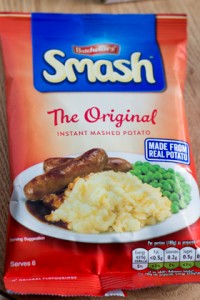
Instant potatoes by Meimanrensheng
These are cooked, mashed and dehydrated potatoes that come in flakes or granuals. They can be reconstituted with liquid and do not easily clump. They can be used in baked goods with success such as focaccia.
Potato starch (Fecola di patata)
Potato starch is used in desserts and breads. It makes baked products lighter and more moist and prolongs their shelf life.
Prataiolo, fungo – See Mushroom: Button
Prawn / Shrimp / Crayfish / Mantis prawn (Gambero / Gamberone / Gamberetti / Gamberello / Gamberell / Mazzancolla / Carabinero, Gambero di Fiume, Canocchia / Panocchia) (Squilla mantis, Crangon crangon, Parapenaeus longirostris, Palaemon elegans, Plesiopenaeus edwardsianus, Aristeomorpha foliacea, Aristeus antennatus, Penaeus kerathurus / Melicertus kerathurus, Astacus astacus/Astacus fluviatilis, Austropotamobius pallipes/Orconectus limosus/ Palaemonetes antennarius)
Equivalents: 10-12 crayfish = 1 serving
120 grams shelled prawns = 240 grams unshelled prawns = 6 large prawns = 1 serving
There are two main types of prawns in Italy, the Mediterranean prawn (gambero) and mantis prawn (canocchia). Mediterranean prawns range in colour from pink to red and grow up to 20 cm in length. They are wild or farmed. Prawns have a long, thin body, which is divided into three parts: the cephalothorax, the abdomen, and the tail with five pairs of swimming legs. Very large normal prawns in America are called “scampi” although in Italian this refers to langoustines (See-Lobster). In America all prawns can be called “shrimp” (although sometimes very large prawns are called prawns) whereas in Britain they are normally called prawns. Mantis prawns are long prawns with a very hard shell.
Buy: Buy prawns whose head and shells are intact, are not missing legs, and are not soft, or limp and feel heavy. Smell the prawns, if they smell fishy or of ammonia, then don’t buy them. They should have a fresh sea smell, and be bright coloured with clear, shiny, springy crisp shells. Prawn shells lose colour and their joints discolour when they begin to dry out. Avoid prawns with a black or very dark coloured head. Mantis prawns have less meat during the spring and beginning of summer. Crayfish and mantis prawns.deteriorate rapidly so are best purchased alive if possible. Buy frozen prawns and crayfish, not thawed as they spoil more quickly than fresh.Prawns vary greatly in size depending on the type.
Types:
螳螂虾Mantis prawn
螳螂虾Mantis prawns (Canocchia / Panocchia) (Squilla mantis) are found in the Adriatic from the Marche to the Veneto. These are long prawns with a very hard shell that grow up to 25 cm in length. They are a pearly light yellow colour with pink or light purple tinges. They are flatter than normal prawns and they are best in winter when their meat is more consistent.
Regional names: astrea, càmbara de fangu, canocia, caraviedde, cicala di mare, pannocchia, schirifizu, sparnocchia, stracciavocc, strappabocca
虾Prawn / Shrimp
Saltwater:
小虾Gamberetti (Small prawns):
普通虾Brown shrimp / Sand shrimp / Bay shrimp / Common shrimp (Schia / Gamberetto grigio / Gamberello / Gamberell / Gambero di sabbia) (Crangon crangon) is a tiny brownish-grey coloured shrimp that has good meat. It grows up to 5 cm in length. They live in the lagoons and estuaries in Veneto. They are rinsed and boiled in salted water to be served as a starter or snack (cicheto in Veneto). They are also good deep-fried whole.
Caridean shrimp (Gamberetto boreale) (Pandalus borealis) lives in the coldest parts of the Atlantic and Pacific Oceans. They grow up to 10 cm. They are sold in brine, fresh and frozen. They are best fried whole with their shell on.
Common prawn (Gambero commune / Gamberetto di roccia) (Palaemon serratus) lives throughout the Mediterranean Sea. It is sold frozen and fresh. It is suitable for all types of cooking.
深水玫瑰虾Deep-water rose shrimp (Gambero rosa del mediterraneo / Gambero Bianco) (Parapenaeus longirostris) is a smaller, light pink prawn. It grows between 6 to 12 cm in length and while the meat is good quality, it is inferior to the rest of the prawns listed below. It is sold fresh, cooked, or frozen. It is best boiled or fried. The small ones can be eaten whole with the shell.
草虾Grass prawn (Gambero squilla / Gambero fascina) (Palaemon elegans) is a small grey prawn that grows up to 6 cm in length. It is similar to the common prawn.
大虾Gamberoni (Large prawns):
Argentian red shrimp (Gambero argentino / Gambero atlantico) (Pleoticus muelleri) can grow up to 25 cm and has a pink to red shell. It lives along the South American coasts from Brazil to Chile. It is sold throughout the world frozen and is categorized by size (large to small) L1, L2 and L3. It is a good quality prawn which is best cooked baked in salt, grilled, deep-fried or in sauces and soups.
Giant tiger prawn / Asian tiger shrimp (Gambero black tiger) (Penaeus monodon) are dark grey with black stripes and grow to about 20 cm or more. They live in southeast Asia. .
大红虾Great red prawn / Scarlet prawn (Gambero Rosso / Carabinero) (Plesiopenaeus edwardsianus) are a bright red, large prawn that can grow up to 33 cm. They live in the Atlantic Ocean and are typically sold frozen. They have excellent meat.
Kiddi shrimp (Gambero indiano) (Parapenaeopsis stylifera) grows up to 15 cm. It is sold peeled frozen and may be pre-cooked. They are of low quality.
地中海红虾Red Mediterranean prawn (Gambero rosso mediteraneo / Gamberoni) (Aristeomorpha foliacea) is a large, intensely red prawn, which can grow up to 22 cm in length. It lives in the Mediterranean and Adriatic Seas. It is highly prized for its pronounced flavour suitable for soups and stews. They can also be eaten raw, boiled for 2 minutes, grilled, fried or sautéed. It is good fresh or frozen.
地中海红虾Red Mediterranean prawn (Gambero rosso mediteraneo / Gamberoni) (Aristeus antennatus) is a large, intensely red prawn, which can grow up to 22 cm in length. It is distinguishable from the Artisteomorpha foliacea above because it is rosier in colour with hues of purple. It lives in the Mediterranean and Adriatic Seas. It is highly prized for its pronounced flavour suitable for soups and stews. They can also be eaten raw, boiled for 2 minutes, grilled, fried or sautéed. It is good fresh or frozen.
三槽虾Tripe grooved prawn / Tiger prawn (Gamberone mediterraneo / Gambero imperial / Mazzancolla) (Penaeus kerathurus / Melicertus kerathurus) is a very large type of prawn which grows up to 22 cm in length. It is a light coloured grey or pink with purple hues and has a delicate flavour. It lives in muddy or sandy waters and also lagoons in the Mediterranean and Adriatic Seas. It is often grilled with garlic, olive oil, and parsley. It can be successfully substituted with the Asian variety,Penaeus japonicas (mazzancolla giapponese). It is sold fresh, frozen and pre-cooked. They are versatile in cooking. With the shell on they can be boiled, grilled and baked in salt. Deshelled, they are best sautéed or deep-fried.
Whiteleg shrimp / Pacific white shrimp (Mazzancolla tropicale) (Penaeus vannamei) grow up to 20 cm in length and live in tropical countries. They are sold frozen whole without the head. .
淡水Freshwater (Acqua dolce):
Crayfish have ten legs of which two are claws.
欧洲小龙虾European crayfish / Broad-fingered crayfish / Noble crayfish (Gambero di fiume / Gambero in acqua dolce) (Astacus astacus / Astacus fluviatilis) only exists in Venezia Giulia. It grows up to 15 cm in length and has a delicate flavour.
白爪小龙虾European freshwater crayfish / White-clawed crayfish / Atlantic stream crayfish (Gambero delle Zampe / Gambero di fiume europeo) (Austropotamobius pallipes) are found throughout Italy although are endangered. They are brownish in colour with a pale underside. They grow up to 12 cm in length and have a delicate flavour. In Italy it is more common to find the Turkish crayfish (Astacus leptodactylus).
Eastern crayfish / Delcore crayfish (Gamberi di fiume americani) (Orconectes limosus / Procambarus clarki) are an invasive native American crayfish species which has infested northern and central Italy. They have smaller, less flavourful meat.
Red swamp crayfish / Louisiana crayfish / Louisiana crawfish / Mudbug (Gamberi di fiume americani) (Procambarus clarki) are crayfish from America which have infested the waters in Italy. They have smaller tails and claws and are of inferior quality to that of the native Italian variety.
Grass shrimp (Gamberino di fosso / Gamberino di Salterello) (Palaemonetes antennarius) are a small shrimp which grow up to 2 cm in length and are semi-transparent. They live in the Po Valley and are particularly prized in Mantova. They are usually floured and deep-fried.
Sizing:
The sizing is numbered suggesting the number of prawns to make a pound (450 gms). So U10 means 10 prawns to make a pound (the largest size). “U” and the number means “under” so U10 means less than 10 prawns to make a pound. There is also U10/20 (medium sized – it takes 10 to 20 prawns to make a pound), U20/30 (small sized – it takes 20 to 30 prawns to make a pound), and U300/500 (extra small sized- it takes 300 to 500 prawns to make a pound).
Store: Fresh mantis prawns should be cooked upon purchasing. It is best to also eat prawns as soon as they are purchased, remembering to keep them cool even on the way home. Prawns can be stored in the refrigerator, covered with ice and parchment paper in a perforated container such as a colander over a bowl which allows the liquid to drain. If the prawns are left to sit in liquid, they will begin to decompose. They can be kept this way for 1-2 days. Prawns can be successfully frozen by placing in a lidded container and covering with water, sealing, and freezing for up to 3 months.
Prepare: Defrost prawns in salted iced water or a brine. Prawns should be washed under cold water and brushed to remove any algae or mud. If the recipe requires the prawn to be shelled, twist off the head, remove the legs, and use your thumbs to open the belly of the prawn and remove the shell. The head and shells can be used in fish broth. Use a paring knife to cut along the back and remove the black line down the back. If the prawn is to be left with the head on, remove the middle part of the body leaving the head and end of the tail attached. Place a toothpick ito the back to pull out the black line running down the back.
Crayfish: To prepare crayfish, let them sit for an hour in cold water before cooking. To clean, brush it under running water. Prepare a court-bouillon to boil the crayfish until they turn red. Remove from the water and remove the head and claws. Remove the shell from the tail and break the claws to remove the meat. The heads and shells can be used in broth.
Mantis prawns: To prepare mantis prawns, they can be placed in boiling salted water for 5 minutes, drained, cooled, and then deshelled. Otherwise they can be shelled raw by using scissors to cut off the end of the tail and down the sides lengthwise along the body. Open the top of the shell to remove the tail meat.
Cooking prawns: Do not overcook prawns as they become tough and rubbery. To boil or steam, turn off the heat as soon as they are added to the salted water or steamer and let sit for for 5 to 10 minutes depending on their size. To fry, batter or bread the prawns and deep fry at 180C until golden. To grill, place the unshelled prawns on the grill and cook, turning until they have entirely changed colour. To bake prawns in salt, place unshelled prawns on top of the rock salt, cover with more rock salt and bake at 180C for 10 minutes. To sauté or use in soups or sauces, add the aromatoics ot the pan and cook, add the prawns with the head but with the body shelled, add a bit of wine, reduce the heat, cover and cook for 10 minutes.
Eat: Small prawns are fried (gamberetti rosa fritti, gamberetti grigi fritti), used in risotto (risotto con i gamberetti) or boiled (gamberetti rosa lessati, gamberetti grigi lessati) and served with tomato sauce or garlic and parsley (gamberetti grigi aglio e olio). Large prawns (longer than 20 cm) are broiled, deep-fried or added to sauces (gamberoni in umido) or soups.Mazzancolla are delicately flavoured and is best grilled. Fresh water prawns are broiled, poached (gamberi alla umbra), grilled (gamberoni alla griglia), or used in risottos (risotto coi gamberi, risotto alla certosina) or pastas. Mantis prawns are good boiled (canocchie bollite), steamed, sautéed with parsley, garlic, and lemon, breaded and deep-fried, or served in soups (cacciucco) and risotto.
Prezzemolo – See Parsley
Prosciutto / Ham / Cured ham (Prosciutto / Prosciutto cotto / Prosciutto crudo)
Substitutes: coppa (for cooking), culatello (for eating raw)
Prosciutto can be made from the legs of wild boar (prosciutto di cinghiale), deer (prosciutto di cervo), chamoise (mocetta), goat (prosciutto di capra / violini di Chiavenna), buffalo, goose (prosciutto crudo d’oca), and turkey but typically refers to the hind thigh of a pig. There are two types of prosciutto: proscuitto crudo (cured ham) which is cured or raw and prosciutto cotto (ham) which is baked, steamed, or boiled. To make prosciutto crudo, the pig’s leg is kept refrigerated, then pressed and cleaned, excess fat is moved, it is shaped, then salted for 8 to 18 months (sometimes with seasonings), brushed, cleaned, rested, and then aged. This process requires some skill in order to use an appropriate amount of salt so that the prosciutto is preserved but not so much as to compromise the sweet flavour of the meat. The proscuitto loses 30% of its weight during the process. To make prosciutto cotto, the thigh of a pig is pickled in salt, saltpetre, nitrates, monosodium glutamate, sugar, black pepper, and other seasonings before then being baked, steamed, or boiled. Prosciutto cotto can also be smoked or made from the shoulder of the pig (prosciutto cotto di spalla).
Buy: Ideally purchase prosciutto which has been freshly sliced as its texture deteriorates once cut. Another benefit of purchasing freshly sliced prosciutto is that it can be tasted before purchasing. Pre-packaged prosciutto is fine for cooking but for eating raw, it is vastly inferior in texture. Buying a whole leg requires an industrial meat slicer at home in order to achieve the desired paper-thin slices. There are many types of prosciutto but two most famous types are prosciutto di Parma (the most well-known and sold abroad) and prosciutto di San Daniele (small production but considered the finest).
Some types:
Prosciutto di Bosses / Jambon de Bosses / Valle d’Aosta jambon de Bosses PDO is a raw ham from Saint-Rheymy-en-Bosses in the Valle d’Aosta and is truly excellent. It is dry-cured with sea salt, garlic, sage, rosemary, and local berries and aged for a minimum of 12 months.
Prosciutto di Carpegna crudo PDO is a ham produced in Carpegna in the Marche.
Prosciutto di Norcia PGI is a raw ham produced in the province of Perugia in Umbria. If it is industrially produced, it is cured twice with sea salt and black pepper and aged for a year. Artisan hams are cured with kitchen salt, washed, rubbed with pepper, hung, lightly smoked, and aged for 22 months. It has an intense and rich flavour.
Prosciutto di Parma PDO is a raw ham from Parma in Emilia-Romagna which is made from Large White, Landrace, or Duroc pigs. It is salted, hung dry, and aged for 10 to 12 months. True prosciutto di Parma will carry the seal of the local producers’ consortium which will state, “corona ducale a 5 punte”. To read how prosciutto di Parma is made, click here.
Prosciutto di San Daniele PDO is a raw ham from San Daniele in Friuli-Venezia Giulia. It is cured in salt, massaged, pressed into a guitar shape, and aged in chambers for a minimum of 12 months. It is the finest of all the prosciutto with a delicate, slightly sweet flavour. It should be served raw to preserve its fine texture and taste.
Prosciutto di Sauris is a ham from Sauris in Friuli-Venezia Giulia which is salted and smoked for a month over a fire made from local resinous trees.
Prosciutto toscano PDO is a raw ham from Toscana. It is cured with salt and pepper, washed and aged for 10 to 12 months. It has a slightly chewier texture and saltier in flavour than the types of prosciutto listed above and while tasty, is considered inferior.
Speck dell’Alto Adige PGI is a cured smoked ham from Trentino Alto Adige. It is dry-brined with salt, pepper, pimento, garlic, juniper berries, and sugar, smoked for two to three weeks and aged for up to 24 days.
Store: Prosciutto can be kept in the refrigerator for 3 to 5 days well sealed or frozen for 4 to 6 months.
Prepare: If the prosciutto was purchased pre-packaged or freshly sliced, there is no special preparation required. A whole leg or unsliced chunk of prosciutto will require an industrial meat slicer to slice it paper thin.
Eat: Prosciutto can be eaten raw on its own or accompanied by other cold cuts, melon, figs, mozzarella cheese, salad, on top of a pizza, and with bread (gnocco, piadina). It is also cooked and used in stuffed pasta, to wrap veal (saltimbocca), wrapped around sea bass, stuffings, in sauces, and used to flavour vegetables (piselli al prosciutto).
Prosciutto cotto – See Prosciutto
Prosciutto crudo – See Prosciutto
Prugnolo, fungo – See Mushroom: St. George’s
Puina – See Cheese
Pumpkinseed sunfish– See Fish: Pumpkinseed sunfish
Puntarelle – See Chicory
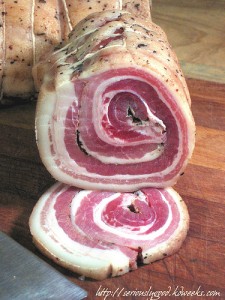
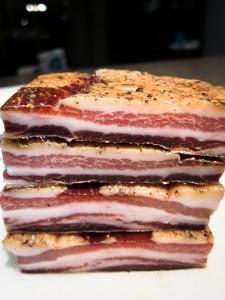
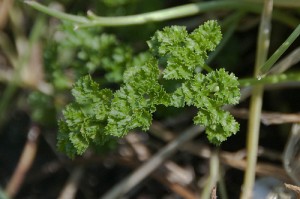
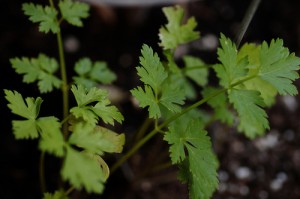
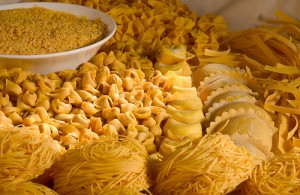
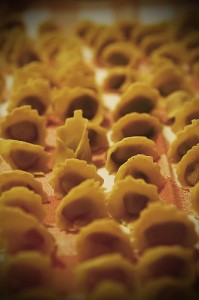
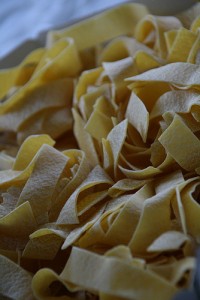
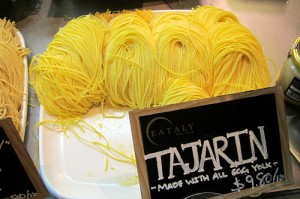
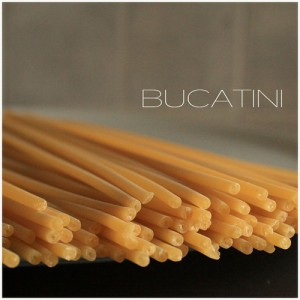
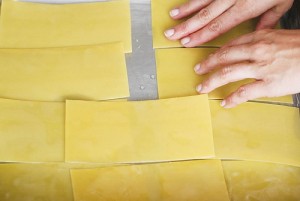
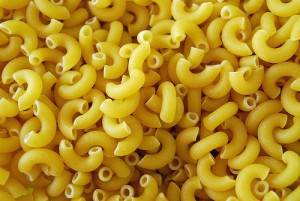
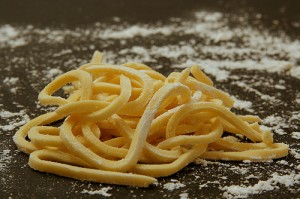
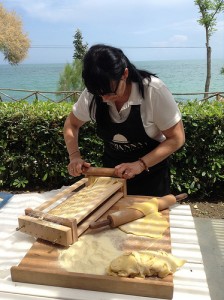
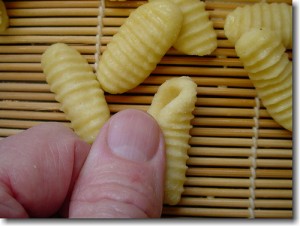
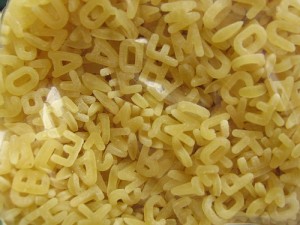
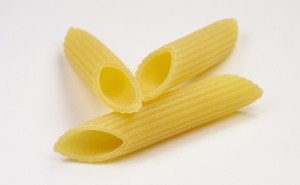

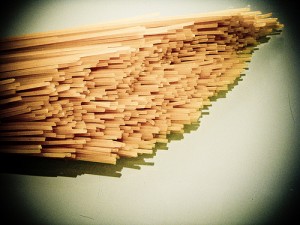
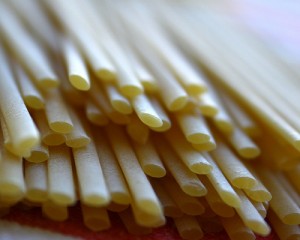
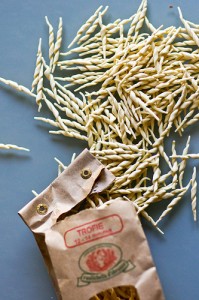
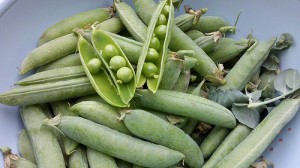
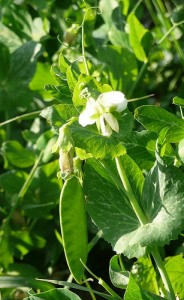
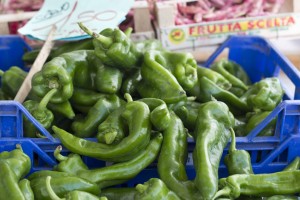
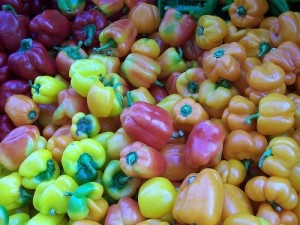
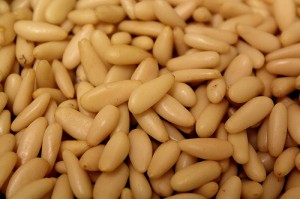
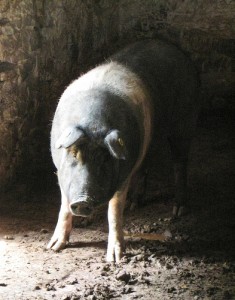
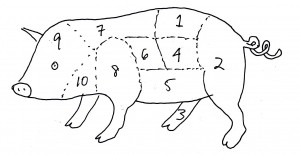
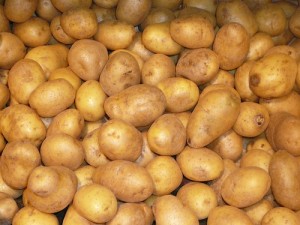
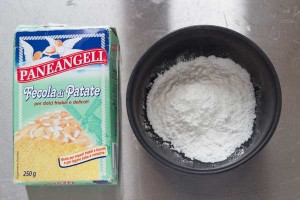
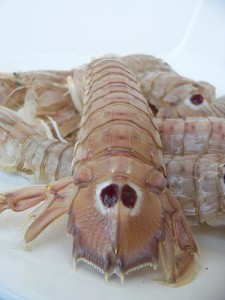
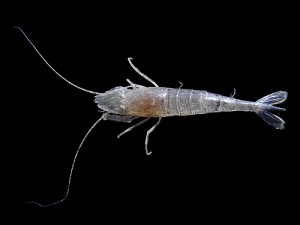
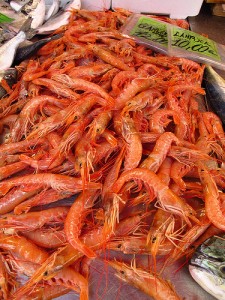
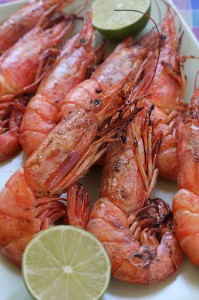
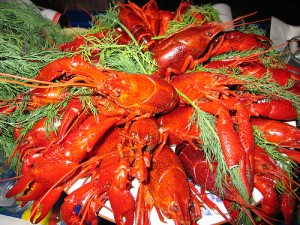
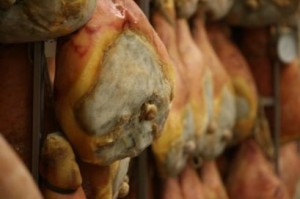
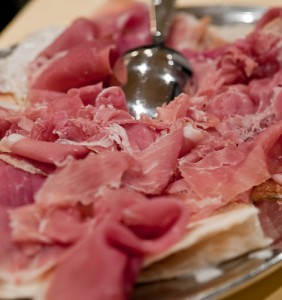

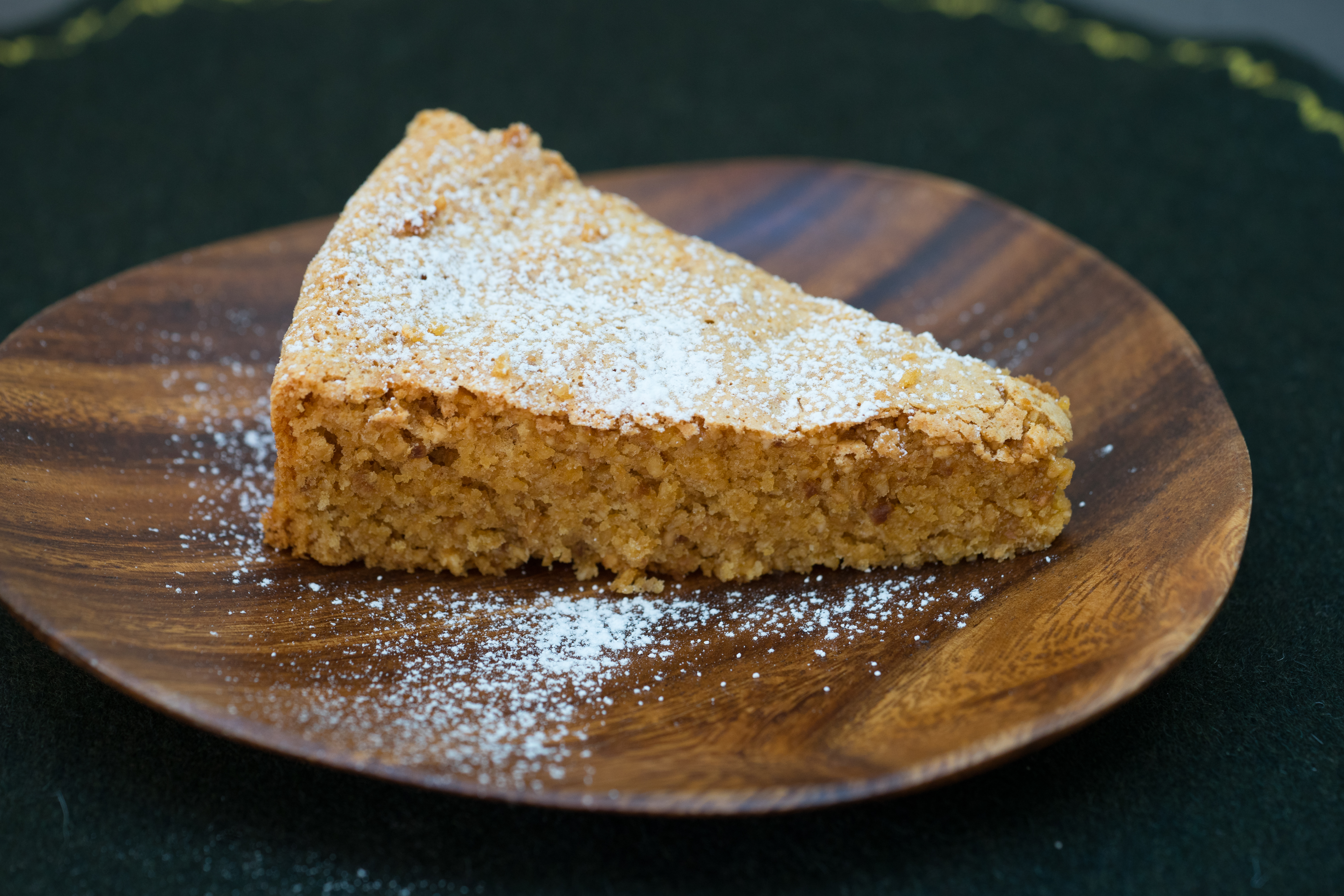
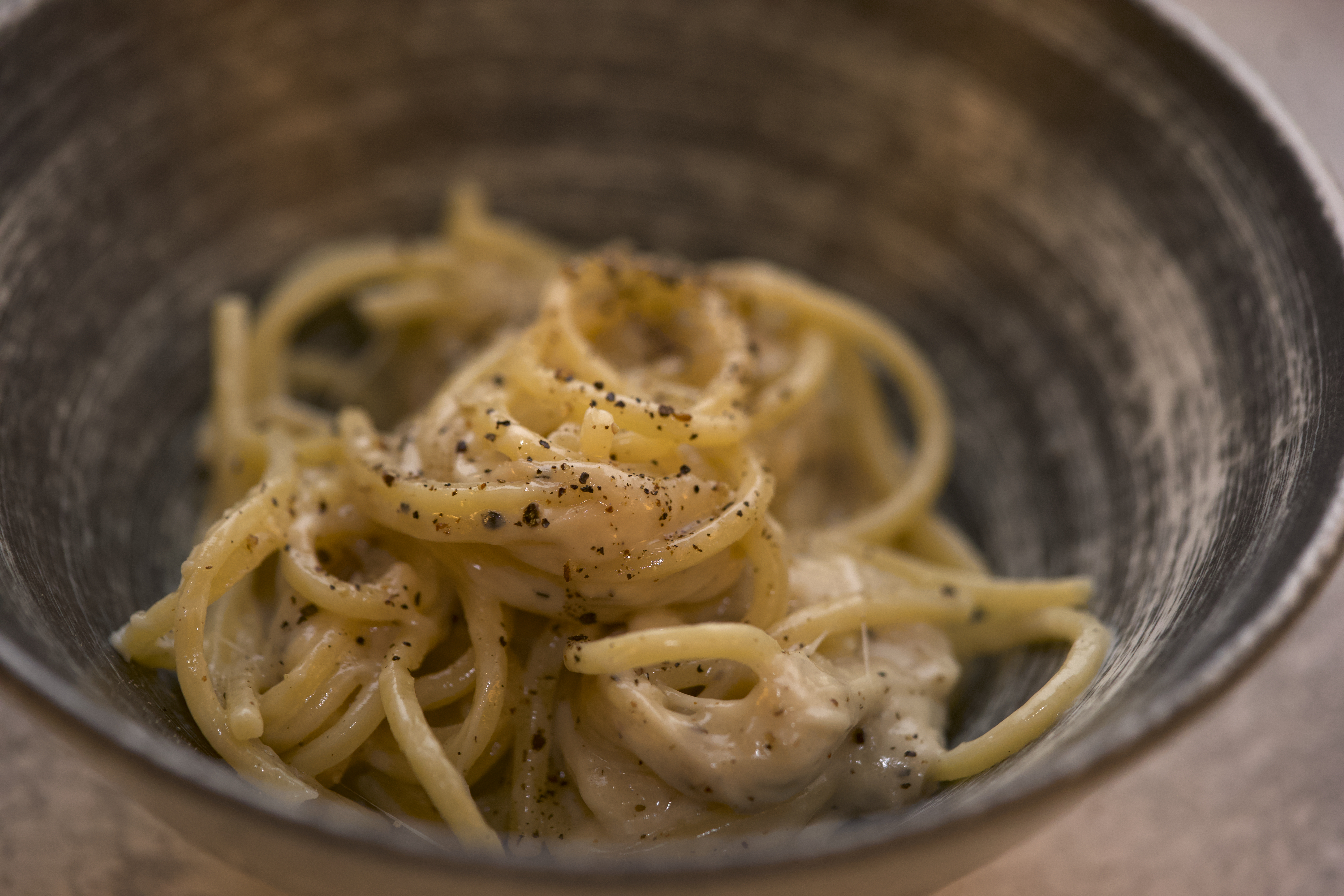
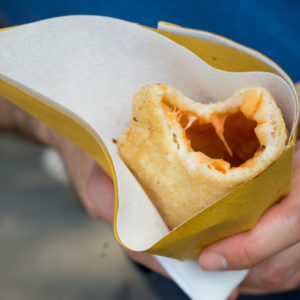
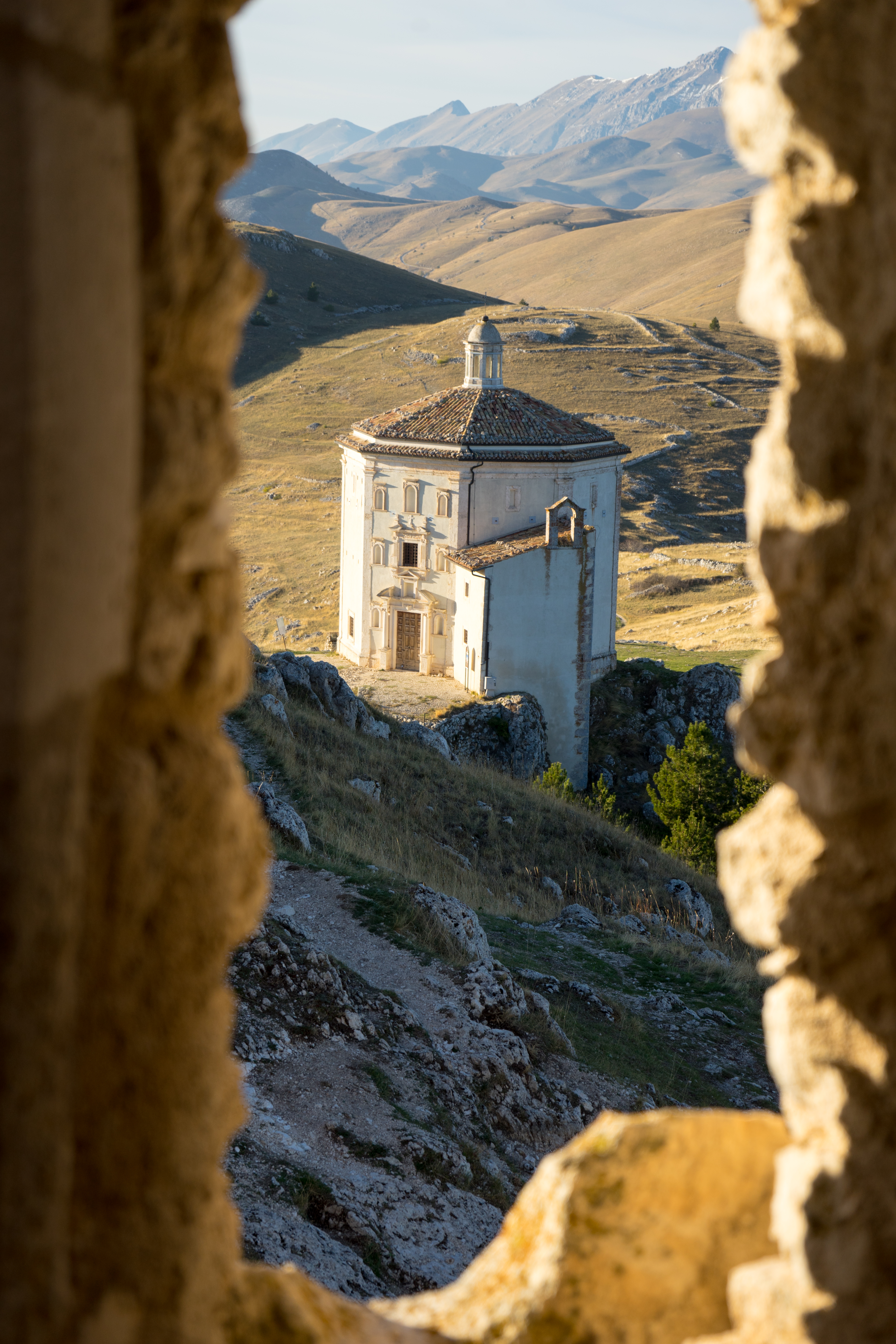
Leave a Reply